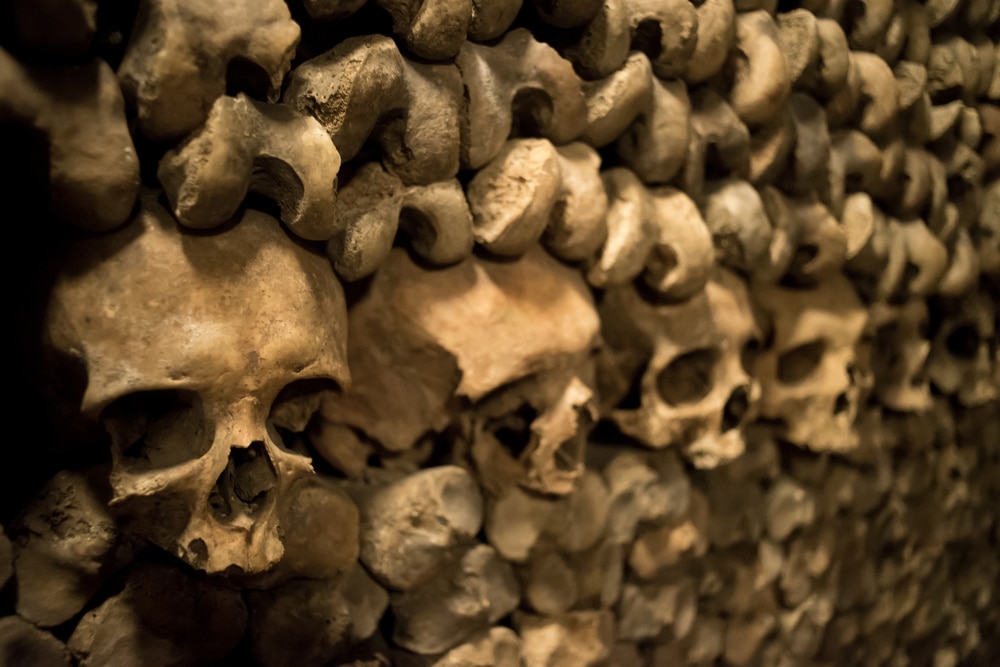Paris Catacombs
The catacombs of Paris are probably the most famous underground network in the world. The starting point of the catacombs is the ossuary on the Avenue du Colonel Henri Rol-Tangy in the Quartier de Petit-Montrouge. It is located in the 14th arrondissement of Paris, in the south of the French capital. The bones of deceased Parisians piled up there create an eerie atmosphere and are a popular tourist attraction.

Origin of the catacombs
Before the catacombs were used as an ossuary, quarries were located there. Even before the birth of Christ, building materials were extracted from there to construct the buildings of the city. Besides stones for roads or walls, materials such as plaster and clay were also extracted from the quarries. In the beginning, the extraction of the materials took place in the open air, but with time it became necessary to go deep into the ground to find new raw materials. Therefore, from the 12th century onwards, mining was carried out in shafts that were up to 35 metres deep.
Little by little, the underground quarries thus became long tunnels, which moved towards the centre of Paris. Today, the network of tunnels created by the quarrying of the stone is over 300 kilometres long. All arrondissements except districts one to four were thus undermined. Auxiliary tunnels, an additional 100 kilometres long, were also dug to investigate the efficiency of the quarries. Thus the tunnels beneath the city extend for a total of 400 kilometers.
A great deal of anxiety spread among the Parisian population that the quarries could lead to the collapse of buildings. The city's administration began to find countermeasures. In the meantime, it was proposed to fill the enormous cavities again, but no solution was found and the proposal was discarded.
Eventually, road and building damage did indeed occur due to the hollowing out of the subsoil. In 1785, extraction of the rock ceased and the quarries were closed. At the same time, many cemeteries in central Paris were closed and the remains of those buried there needed a new resting place. It was therefore decided to place the bones in the quarries. It was started at the entrance of the former galleries. Today this place is nicknamed "Barriere d'enfer", which can be translated as "barrier to hell".
Active use for burial
Then, from 1785 onwards, bones of deceased persons were constantly placed there. The poor sanitary situation in the French capital was exacerbated by the overcrowding of the cemeteries. Corpses could only be buried in the cemeteries for such a short time that they had to be dug up again half-dead. Many residents of cemeteries became seriously ill and complained about the terrible stench. So it was decided to dissolve many cemeteries completely and to move the bones to the catacombs in the future.
Today's state
As a tourist attraction, the catacombs of Paris are world famous today. About two kilometres of the former tunnels are accessible as a museum today, the entrance of which is located at the Place Denfert-Rochereau. Besides the museum, however, the catacombs are closed for civilians, only authorized city workers are allowed to enter the rest of the catacombs, as they are also used as a place for supply lines.
Even today, many of the tunnels have not been fully explored and there is no complete map of the catacombs. Nevertheless, there are always people who enter the vast network without permission. The "cataphiles", as they are called in Paris, take a high risk in doing so, as the exit is difficult to find in the tangled system.




